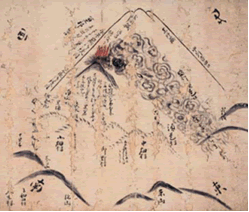What kinds of works does Fuji Sabo Office do?
History of Disaster
History of eruptions
| Year | Type of activity | Items described in old records (excerpt) |
| 781 | eruption | Ash falls at mountain foot; leaves died (Shoku Nihongi) |
| 800-802 | Enryaku eruption | Crushes stones blocked Ashigara route, so Hakone route was opened (Nihongi) |
| 864-866 | Jogan eruption | Lava flows went into Lake Motosu and Lake Senoumi (Nihon Sandai Jitsuroku) |
| 937 | eruption | Lava flows filled an unknown lake (Nihongi) |
| 999 | eruption | Eruption (Honcho Seiki) |
| 1020 | Fumes and volcanic red glow | Smoke rose from the summit, and flames were visible at night (Sarashina Nikki) |
| 1033 | eruption | Lava flows reached the foot of the mountain (Nihongi) |
| 1083 | eruption | Explosive eruption (Fuso Ryakuki) |
| 1435 | eruption | Flames observable on Mt. Fuji (Odaiki) |
| 1511 | eruption | Strange rumbles was heard near Lake Kawaguchi, and the Rock Kamaiwa was burned (Myohojiki) |
| 1704 | Rumbling | 35 days after the Genroku Kanto Earthquake, Mt. Fuji rumbled for 4 days. (Daisenji document) |
| 1707 | Hoei eruption | 49 days after the Hoei Tokai Earthquake, an explosive eruption occurred for 2 consecutive weeks (Multiple historical documents) |
 【Old map depicting Hoei eruption】 Gotenba City, Shizuoka Prefecture: Collection of Mr. Fumio Takiguchi Provided by:Shizuoka Prefectural Central Library, History and Culture Information Center |






